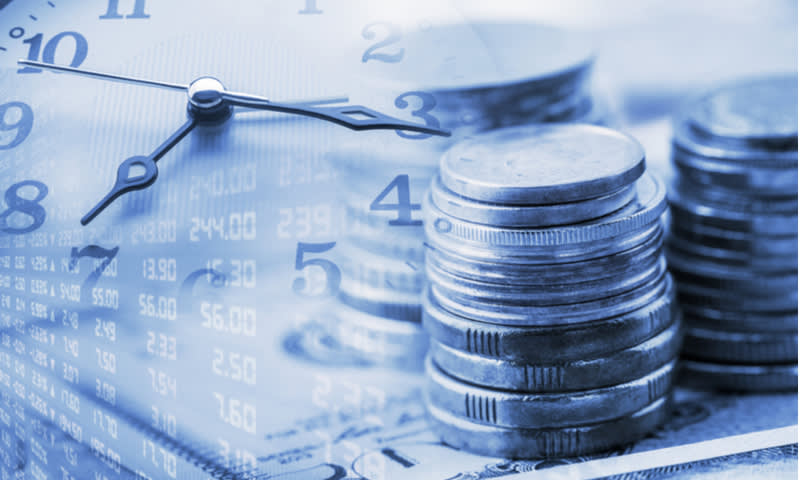When entering the world of investment, everyone certainly expects optimal profits in the future. There are many things that can be used as material for consideration and calculations in order to be able to realize this, one of which is knowing the future value.
Because it is useful to know the estimated value of cash or funds held in the future when investing, this term is familiar to investors. This prediction can also help owners of capital to calculate the amount of money that can be owned in the future based on the rate of return.
Then, what exactly is meant by future value or value in the future? Also, what are the benefits, calculation formulas, methods of analysis, and the advantages and disadvantages of this future value? So, to answer these questions, here is a summary of the explanation regarding future value.
What is Future Value?
Basically, future value is an estimate that estimates the current value of money or funds in the future. The estimation is calculated based on interest rates, as well as other special growth rates.
Future value or it can also be referred to as the value in the future can be easily predicted if the growth rate is determined with certainty. This future value can also be used to estimate or calculate the amount of funds that will be held in the future.
This term can also be interpreted as the future value of money or cash that is obtained or held today. Future value of money or cash in the future can be calculated by factoring it using a certain rate of return or return that can be generated by money or cash.
In addition, the estimated future value of cash or money can also be determined by the rate of inflation. It should be noted that the higher the rate of return, yield, or inflation rate, the future value will also be greater in the future.
Future Value Benefits
After knowing the meaning of future value, not a few of you may be curious about the importance of knowing this value. Because it is useful for predicting or estimating the amount of funds or money held in the future, this value can help investors in assessing the amount of money they will get in the future.
Because the value of money will depend on the level of return or yield, investors will generally adjust it according to their risk profile. For example, some investors prefer to invest in high, low, or medium risk instruments.
However, it should be understood that almost all investment products have the potential for profit or return that is proportional to the level of risk. For example, investment instruments with a high level of risk generally promise more promising profit potential. Conversely, if fluctuations in the value of investment instruments tend to be stable and conducive, the potential returns also tend to be small.
Formula for Calculating Future Value
Equally important, you also need to know the formula for calculating this future value. Basically, this value can be calculated using the concept of simple interest and compound interest. However, the calculation that is often used is to use compound interest or compound interest.
The formula for calculating the future value of compound interest is as follows.
Future Value or FV = Present Value or PV X (1 + r) ^ n
With a note, r is the rate of return or the ratio of returns, and n is the number of calculation periods.
After that, the calculation of the future value can be done with the following steps.
- Determine the quantity currently available
- Determine the time period or duration of the investment
- Determine the rate of return or interest rate over a predetermined period of time or duration
- Perform calculations using the formula above and enter numbers according to the information and data that have been determined.
Meanwhile, the formula for the future value with single interest is as follows.
FV = PV X (1 + (r X n))
With a note, r is the rate of return or the ratio of returns, and n is the number of calculation periods.
Example of Future Value Calculation
To make it easier to understand the future value formula, it would be nice to see the following example calculation.
Someone has cold money with a nominal value of 50 million. Instead of being deposited in savings, the person intends to invest it in an investment instrument in the form of shares with the assumption that the rate of return or yield is 15 percent per year. It is planned that the investment activity will be carried out for about 5 years.
Based on this information, the following is a calculation of the future value of the cold money invested if the interest is compounded.
Future Value or FV = Present Value or PV X (1 + r) ^ n
FV = 50 million X (1 + 15% or 0.15) ^ 5
FV = 50 million X (2.01)
FV = 100, 5 million
So, by calculating the future value of compound interest, with a rate of return of 15 percent per year and a capital of 50 million, that person can have a total investment of 100.5 million after investing for 5 years.
On the other hand, if using single interest, the future value of the cold currency would be like this.
FV = 50 million X (1 + (r X n))
FV = 50 million X (1 + (0.15 X 5))
FV = 50 million X 1.75
FV = 87.5 million
So, by calculating the future value of a single interest, with a rate of return of 15 percent per year and a capital of 50 million, that person can have a total investment of 87.5 million after investing for 5 years.
How to Analyze Future Value
Looking at the example of calculating the future value above, it can be concluded that the value of money or funds will basically continue to grow. In other words, 50 million today could double in number in the next few years.
This also indirectly explains that having money of 50 million today is better than having money with the same nominal value in the years to come. Based on this understanding, a concept known as the time value of money or TVM emerged.
Therefore, when investing, it is important for investors or capital owners to consider the level of return or yield. In the example above, the return on stock investment of 15 percent may be just an assumption or estimate.
This is because the stock price and the company's performance in the future cannot be accurately ascertained only through past performance or business conditions. When an investment instrument has a definite rate of return or yield, then predictions or estimates of the future value can be calculated and known more easily and accurately.
Future Value Advantages and Disadvantages
The advantage of the future value is that the calculation is relatively easy and simple in knowing and estimating the investment value and its growth in the future. However, the drawback is that the future value rests on the rate of return or return.
This makes the calculation of the value cannot be ascertained accurately and precisely if it only relies on estimates or estimates. In order to get a definite rate of return, you can invest in instruments in the form of bonds or deposits, both those that adhere to the sharia or conventional system. That way, the future value can be known with certainty using the calculation formula described above.
Know the Potential for Investment Profits Accurately and Optimally Through Future Value
That's an explanation of the meaning of future value, benefits, formulas, how to calculate, and the advantages and disadvantages. By knowing the future value, investors can find out the estimated profit or return they will get through an investment activity. Therefore, this calculation must be understood by investors in order to be able to get optimal profits from investing.



